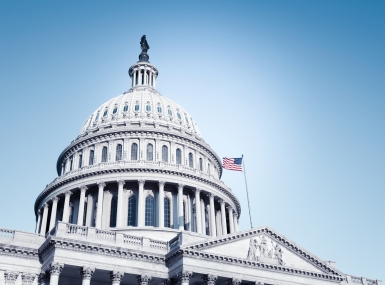Overview of the 2021 Open Enrollment Season
Author

Blaire Bryant
Upcoming Events
Related News

Key Takeaways
Open enrollment for coverage beginning January 1, 2021 under the Affordable Care Act (ACA) began on November 1 and runs through December 15 for the 36 states that participate in the Federal Health Insurance Exchange, or the federal marketplace. The 2021 open enrollment season comes as counties continue to grapple with the impacts of the COVID-19 pandemic.
Ensuring that residents have access to affordable health insurance coverage is essential, as counties face high rates of unemployment, increased public health concerns and economic uncertainty. Given this uncertainty, it is anticipated that more individuals will enroll in coverage provided through the federal marketplace this year than in previous years. Estimates of those who lost job-based health insurance due to the COVID-19 pandemic range from 5 to 10 million people, many of whom will turn to the exchange for health coverage.
This year’s enrollment season also arrives just days before the U.S. Supreme Court is scheduled to hear arguments in a case that could determine the future of the Affordable Care Act (ACA), which established the federal marketplace following the bill’s enactment in 2010. The case, California v. Texas, centers around whether the policy’s individual mandate is constitutional without a tax penalty. The Court could rule on the case in a few different ways, including invalidating the entire law, invalidating parts of the law or upholding the law in its entirety. Oral arguments are scheduled for November 10 and the Court is expected to rule on the case by June 2021.
Despite the uncertainty caused by the COVID-19 pandemic and the Supreme Court case, this year’s open enrollment season comes with some positive news for counties. First, premiums in 2021 are expected to remain relatively stable, and the Centers for Medicare and Medicaid Services (CMS) expect average monthly premiums for benchmark plans to decrease by 2 percent.
Additionally, county residents will have access to more insurer options this year, as 22 additional insurance providers will participate in the federal marketplace, bringing the total number of participating insurers in 2021 to 181. This increase in provider options also means that most individuals will be able to pick from at least three providers. To view CMS’ County by County Projected Insurer Participation in Health Insurance Exchanges map for 2021, click here.
Finally, consumers who purchase their health insurance through the federal marketplace can receive help to pay the costs of monthly premiums. Eligibility for this assistance can come in the form of federal tax credits or cost-sharing subsidies and will be based on income. CMS has created an online calculator where individuals can input their household size, location and income to determine assistance eligibility.
As employers, counties offer health insurance to the nearly 3.6 million county employees. As gate keepers to the local health and human service safety net, counties invest over $80 billion annually in community health systems, and are mandated to provide health care for those that are low-income, uninsured or underinsured in some states. NACo supports expanding health coverage to help counties ensure the health and safety of their residents, particularly at this crucial time. NACo will continue to monitor health care legislation and regulation, as well as the upcoming U.S. Supreme Court case for the potential impact to counties.
Additional Resources
- CMS Fact Sheet: Federal Health Insurance Exchange 2021 Open Enrollment
- NACo September Jobs Report Analysis

Attachments
Related News

State and Local Government Organizations Express Concern Over Proposed Changes to Medicaid Financing and Requirements
NACo, NLC, NCSL, USCM, CSG and ICMA emphasize the impact of policy changes to eligibility requirements and financing of Medicaid.

U.S. Congress begins work on budget reconciliation process: What this means for counties
The House and Senate Budget Committees have marked up Fiscal Year (FY) 2025 budget resolutions to initiate the budget reconciliation process to enact policy priorities without garnering bipartisan support, although the two chambers differ in their approach to drafting the legislation.

Congress introduces bipartisan legislation to strengthen rural health care access and funding
Rural communities face unique health care challenges, from provider shortages to funding disparities. To address these concerns, the U.S. Senate recently introduced two bipartisan bills aimed at improving rural health care access and funding: the Rural Health Focus Act and the Fair Funding for Rural Hospitals Act.
